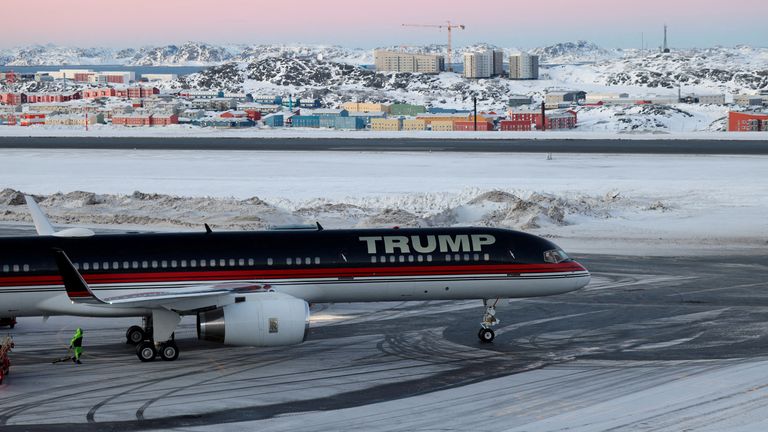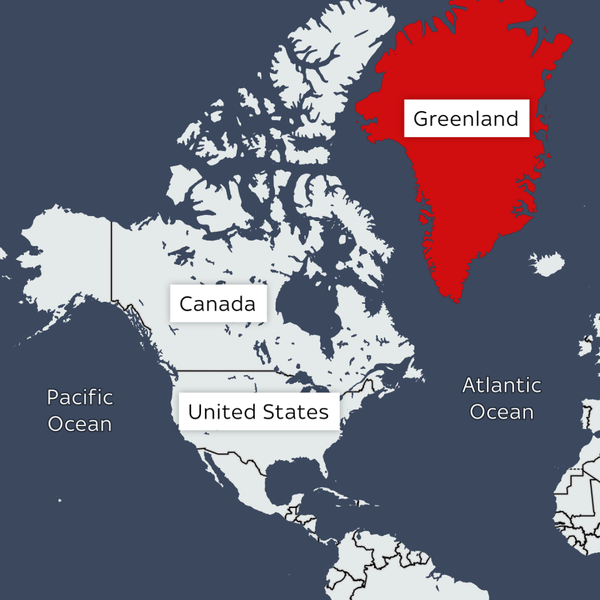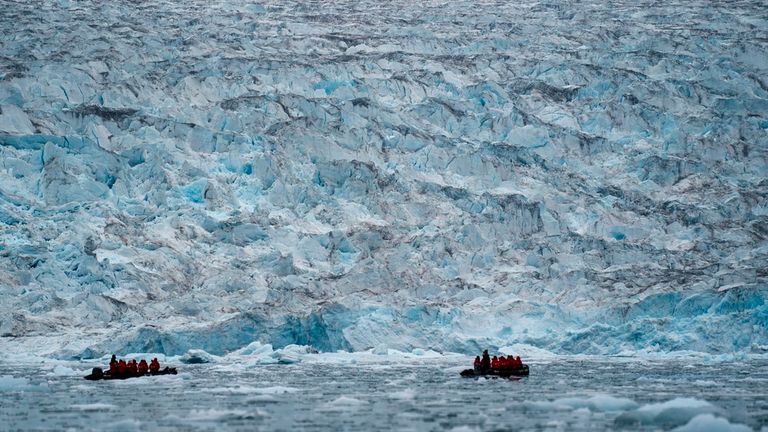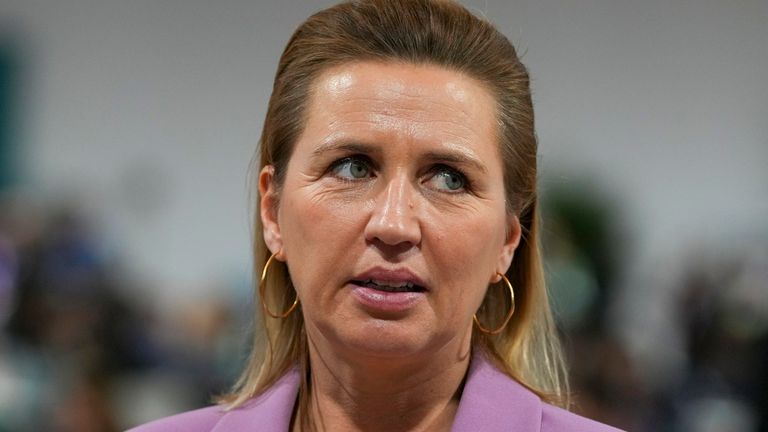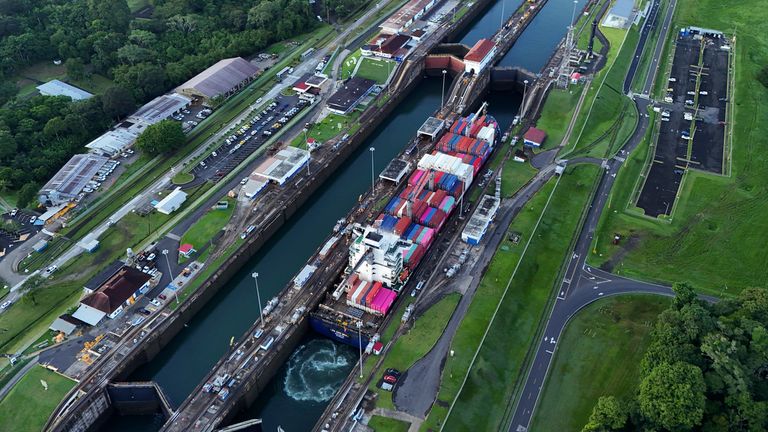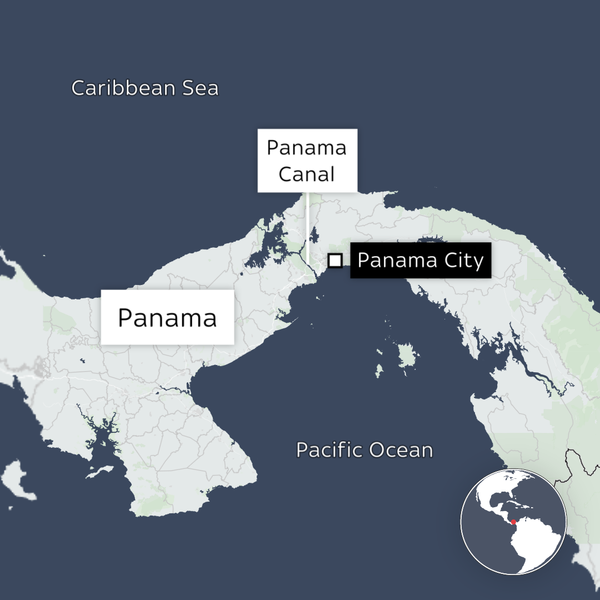Why is Trump Interested in Acquiring Greenland, and Is It Possible? | US News
Following his re-election victory, president-elect Donald Trump has shown a keen interest in acquiring Greenland.
His considerations regarding Greenland align with his ongoing assertions that Canada ought to become the 51st state of the US, along with his directive for the US military to explore options to “reclaim” the Panama Canal.
This article covers all you need to know about the president’s proposals and their potential feasibility.
What motivates Trump’s interest in Greenland?
National security objectives
Greenland is the largest island globally and serves as a semiautonomous territory of Denmark, home to a population of around 57,000, and has been under Danish rule for 600 years.
Moreover, it is a founding member of NATO and hosts a significant US military base.
Positioned strategically between the US, Russia, and Europe, the island possesses a unique geopolitical advantage that America has been interested in for over 150 years.
Its value has increased as the Arctic becomes more accessible for shipping and trade.
The notion of purchasing Greenland is not new to Mr. Trump, who raised the idea during his first presidential term. However, he has reiterated the potential security benefits for the US.
“We need greater national security,” Mr. Trump has previously stated. “I’ve been made aware of this for a long time, even before I ran for president.”
“People don’t realize that Denmark has any rightful ownership of it; if they do, they should relinquish it because we need it for national security,” he added.
Mr. Trump’s interest in the island coincided with a visit by his son, Donald Trump Jr., in January.
Usha Vance, spouse of Vice President JD Vance, is set to lead a US delegation to the island, which the White House described as a chance to familiarize themselves with Greenland.
The delegation aims to “visit historical sites, explore Greenlandic culture, and participate in the Avannaata Qimussersu, Greenland’s national dogsled race”.
Abundant natural resources
In addition to its significant location, Greenland is rich in various natural resource deposits.
Valuable rare earth minerals crucial for telecommunications, along with uranium, billions of untapped barrels of oil, and a vast supply of natural gas that was once inaccessible but is now becoming more available, lie beneath the island.
Many of these minerals are predominantly sourced from China, which prompts other countries like the US to seek these resources closer to home.
A direct view of the climate crisis
Beyond its oil, gas, or minerals, Greenland has significant ice reserves and serves as an immediate observer to the world’s climate challenges.
If that ice were to melt, it would drastically reshape coastlines and has the potential to significantly alter weather patterns.
The ice in Greenland is so substantial that if it melts entirely, global sea levels could rise by 24 feet (7.4 meters).
Furthermore, Greenland influences hurricane and winter storm activities. Its vast ice accumulations can alter jet stream patterns, subsequently affecting storm trajectories across the planet and determining daily weather.
Typically, especially during winter, a high-pressure system off Greenland can lead Arctic air to drop to both the west and east, impacting North America and Europe, as winter weather expert Judah Cohen explained to the Associated Press.
How might this impact the UK?
British politician and security expert Mike Martin remarked on X that the seas between Greenland and the UK, with Iceland situated in the middle, are “extremely crucial” for NATO.
During the Cold War, the UK regularly stationed 50 ships in this area to manage the Greenland-Iceland-UK (GIUK) gap, regarded as the “only practical route” for Russia’s northern fleet to enter the Atlantic Ocean.
The UK and Denmark maintain mutual security interests in this gap.
According to the UK government website, under the UK’s Arctic Policy Framework, military capabilities in conjunction with Denmark will continue to develop to operate in the region and secure UK and allied interests.
However, if the US were to take control of the territory, this collaboration could be disrupted.
British Foreign Secretary David Lammy affirmed to Sky News earlier this year that such comments are “classic Donald Trump”.
“He expressed that he would be working for the working class,” Mr. Lammy stated. “And he perceives American national economic security as central to that.
“That’s why he’s bringing up these issues, concerning the Panama Canal, and I assume similarly for Greenland.”
He further included that beneath Mr. Trump’s “intensity,” lie “considerable national security and economic issues”.
‘Greenland is not for sale’
Since Mr. Trump voiced his interest in Greenland, the country’s government has consistently opposed him.
As the nation approached elections in early March to select a new prime minister, Mr. Trump promised to invest “billions of dollars,” pledging to “make you wealthy.”
The Demokraatit party emerged victorious with 30% of the vote, leading to Jens-Frederik Nielsen’s election. While this party supports independence, it advocates for a gradual transition away from Denmark.
Mr. Nielsen remarked to Sky News’ international affairs editor Dominic Waghorn that he hopes his victory sends a strong message to Mr. Trump that “we are not for sale.”
“We do not wish to be Americans or Danes. We want to be Greenlanders and pursue our own independence over time. We want to build our own nation independently of his wishes,” he stated.
Ahead of the visit led by Mrs. Vance, all five parties in Greenland’s parliament released a joint statement rejecting Mr. Trump’s assertions.
Danish Prime Minister Mette Frederiksen has also stated her belief that the US would not employ military or economic might to gain control over Greenland.
“Greenland is not for sale,” Ms. Frederiksen asserted, adding, “We must remain calm and adhere to our principles.”
While referring to the US as Denmark’s “most significant and closest ally,” she expressed her approval of the US taking a more considerable interest in the Arctic region, although it must be done in a manner “respectful of the Greenlandic people.”
Denmark has acknowledged Greenland’s right to independence at a time of its choosing.
Earlier this year, French Foreign Minister Jean-Noel Barrot also commented that the European Union would not permit “any other nations to infringe on its sovereign borders, irrespective of who they are.”
“If you’re asking me whether I think the United States will invade Greenland, my answer is no. But have we entered a period where it is survival of the fittest? My answer would be yes,” Mr. Barrot stated.
In Germany, Chancellor Olaf Scholz noted that the principle of border inviolability applies to all nations, regardless of their power.
“Borders must not be shifted through force,” Mr. Scholz remarked, although he did not mention the president specifically.
Why is Trump interested in the Panama Canal?
The Panama Canal serves as a waterway connecting the Caribbean Sea with the Pacific Ocean, acting as a shortcut for transporting goods and reducing time and costs, as stated on the Embassy of Panama’s website.
Under Jimmy Carter’s administration, the canal was transferred from US to Panama in 1979, with the US concluding its joint control of the strategic waterway in 1999.
It is currently managed by the Panama Canal Authority, an autonomous government body, while a contractor based in Hong Kong operates two related ports.
Mr. Trump claims that the US is being treated unfairly by paying higher rates for its ships to transit the canal compared to other countries.
He has alleged that Panama is breaching a deal with the US and that “China is essentially taking control” of the canal.
“We transferred the Panama Canal to Panama; we didn’t pass it to China,” Mr. Trump remarked. “They’ve misused that gift.”
Panamanian President Jose Raul Mulino recently denied through a video statement that China has any influence over the canal and rejected the notion of the US regaining authority over it.
“Every inch of the canal belongs to Panama and will continue to belong to it,” he stated.
What about Canada?
Mr. Trump’s continuous attacks on Canada’s sovereignty have sparked significant outrage among its leaders.
He has argued that Canada “only functions as a state,” claiming the US has no use for their resources, such as timber or energy.
“As a state, it would rank among the greatest anywhere,” Mr. Trump said.
“Visually, this would be an incredible country. If you examine a map, you’ll see they drew an artificial line right through it, separating Canada from the US. Just a straight, artificial line imposed long ago. It makes no sense; it’s perfectly positioned to be a prominent and cherished state.”
Relations between the two nations have strained, with new Canadian Prime Minister Mark Carney noting that Canada is facing the most “significant crisis of our lifetimes” due to the president’s “threats to our sovereignty.”
Mr. Carney, previously the governor of the Bank of England, has called for a snap election following Justin Trudeau’s resignation. The election, scheduled for April 28, is likely to focus on who is best equipped to confront Mr. Trump.
Is any of this feasible?
The incoming president has provided scant details on how he intends to expand the US’s presence.
At the start of March, he told Congress that “America is back,” indicating that the American Dream is more vast and vibrant than ever.
If Greenland declares independence, it might choose to form an association with the US.
One avenue could be establishing a type of “free association” similar to that of the Pacific island nations such as the Marshall Islands, Micronesia, and Palau.
Mr. Trump has also indicated he may impose tariffs on Denmark if it declines his proposal to buy the island.
This could pose challenges for Danish firms, particularly pharmaceutical companies like Novo Nordisk, which produces the weight loss drug Wegovy and diabetes medication Ozempic.
Eswar Prasad, a trade policy professor at Cornell University, informed investment magazine Barron’s that the Trump administration could design specific tariffs targeting Danish products, irrespective of their production location.
For Canada, Congress would first need to approve acceptance of a new state.
A referendum might also be necessary in Canada to assess the public’s interest in joining the US before further processes can begin.
Should Canada join the US — a highly improbable scenario — its population of 41.6 million would make it the largest state, surpassing California’s 39.4 million residents.
It would necessitate gaining two Senate seats and 55 seats in the House of Representatives, profoundly influencing US presidential elections.


